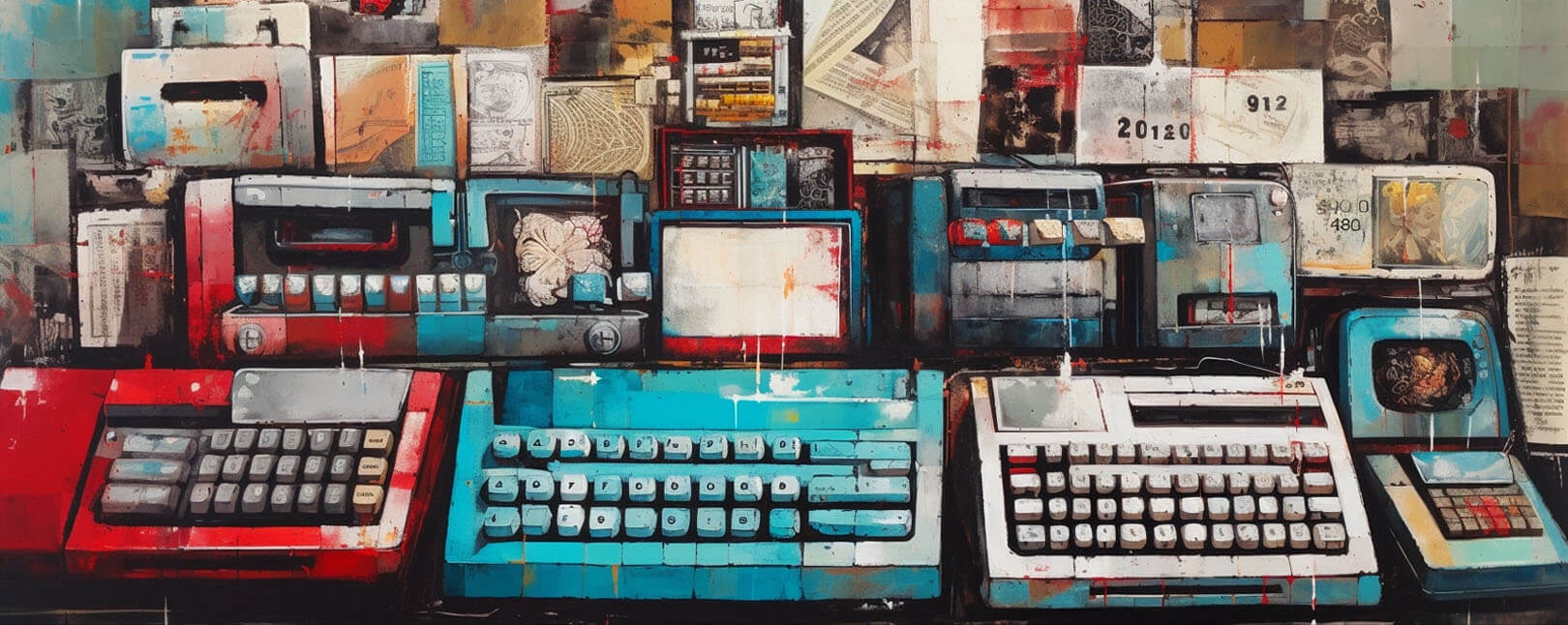Why are Some Merchants Still Using Dated Credit Card Imprinters? What are Some Alternative Options?
In today's fast-paced market, you need to keep up with the latest technological advancements to meet customer demands and remain competitive. This is particularly true when it comes to payment processing.
Credit card imprinters have served businesses well for decades. Some merchants still rely on them, even though the technology is ancient by industry standards. Still, modern alternatives offer numerous advantages that make the switch from imprinting a necessity.
Let’s explore your options, and see how you can move into the 21st Century of payments.
Recommended reading
- What is EMV Bypass Cloning? Are Chip Cards Still Secure?
- Apple Pay: Fast, Secure, & Private… but is There a Catch?
- Terminal ID Number (TID): What is it? What Does it Do?
- The Top 10 Online Payment Processing Providers of 2024
- Is Open Banking Equipped to Fight Fraud?
- Google Pay: How to Sep Up & Accept Payments Using the App
What is a Credit Card Imprinter?
- Credit Card Imprinter
A credit card imprinter is a non-electric mechanism used to create a physical imprint of a customer's credit card, capturing their card information on a carbon-copy sales slip. The imprinter is sometimes derisively called a "knuckle-buster" because of the manual effort required to operate it.
[noun]/kreh • duht • kaard • im • prin • ter /The credit card imprinter consists of a base, a sliding mechanism, and a plate to hold the credit card and sales slip. When a customer presents their credit card for payment, you would place the card and a multi-layered sales slip (usually with carbon paper in between) on the imprinter's base.
To use the device, you would slide the imprinting mechanism across the card. This applies pressure, causing the raised characters embossed on the card face to transfer onto the sales slip.
The carbon paper transfers the imprint to the lower layers of the slip, creating copies of the sales record; one for you, and one for your customer. Once the imprint is complete, you would separate the sales slip layers, and give one copy to the customer as a receipt, and retain the other for your records. At the end of the day, you’d then have to manually enter the payment information for each transaction into your system before batching and processing.
Credit card imprinters were widely used before the adoption of electronic payment processing systems. They were a reliable way to record a customer's credit card information, which would later be processed and billed by the merchant. Even today, some merchants keep imprinters as a backup in case their electronic systems fail, or service is unavailable.
Why Would You Use a Credit Card Imprinter?
We’re not knocking credit card imprinters wholesale. There are situations in which they might still serve you well on occasion.
Despite the availability of more advanced payment processing options, there are still a few scenarios where you might find a credit card imprinter useful. Some of these include:
The use of credit card imprinters has obviously declined a lot in recent years. However, these scenarios illustrate that there may still be some limited applications for this dated technology. You should carefully weigh the pros and cons before relying on this as a long-term solution, though.
Modern POS (point-of-sale) systems already include many solutions for the above situations. They also offer practical, everyday applications that your business needs to thrive, and which imprinters can’t match.
The Trouble With Credit Card Imprinters
Card imprinters aren’t just ancient. They can also cause problems that modern technologies simply don’t.
Lost receipts mean lost sales. Errors in reading an impression, or in manually keying-in information, can mean charging purchases to the wrong account, or simply to an account that doesn’t exist. Plus, a lot of modern cards are flat-printed; you can't get an impression even if you try.
Here are a few downsides to consider before you decide to stick with your old “knuckle buster” technology:
A lot of small businesses argue that they have no need to update their software because their business doesn’t demand a modern POS solution. However, as demonstrated above, that just isn’t true any longer.
The Benefits of Upgrading to Modern Payment Systems
You can’t afford to ignore modern payment trends and expect to grow your revenue, secure your checkout process, and reach more customers.
To that end, upgrading your hardware now can help you with more than just the checkout process. By upgrading from a credit card imprinter to a modern payment processing system, you can enjoy numerous benefits, including:
At the end of the day, you want to focus on your customers and increase your sales. However, most customers nowadays demand modern payment methods and might be put off by card imprinters.
5 Modern Alternatives to Credit Card Imprinters
Modern systems have all-in-one capabilities that could save you time, money, and bookkeeping headaches your credit card imprinter simply can’t. Modern payment alternatives to credit card imprinters offer greater efficiency, security, and compatibility, coupled with a more streamlined user experience and improved functionality.
With that idea in mind, here are five other options for accepting payments:
For an in-depth review of some of the best modern POS systems available, check out our post comparing cloud-based POS systems to traditional POS hardware.
Beyond this, the best POS system for your needs will depend entirely on the specifics of your business. The product category, scale, and business model will be factors. The same applies to the type of backend recordkeeping and analytics you require to secure and promote your brand.
Another issue you need to take very seriously is the dispute situation we mentioned above. How does your business handle chargebacks if you don’t have access to transaction data? Let’s get into this for a moment.
Can Credit Card Imprinters Help Prevent Chargebacks?
Some merchants claim they use imprinters as a means of preventing chargebacks. It makes a degree of sense; if you’ve got an impression of somebody's card, it's hard to argue that a transaction was unauthorized, right?
Unfortunately not.
If you're using an imprinter, you have to look at the carbon paper receipts and manually key in the card information — the number, the expiration date, etc. If you mess anything up, or key in the wrong information, it could very easily lead to a chargeback.
Also, a cardholder can simply claim that the card was used without their knowledge. Even if you have their signature, you’re probably going to need more than that to prove the transaction was legitimate. And don’t forget, you will pay a chargeback fee, regardless if you’re in the right or not.
To be frank, chargebacks are not an issue that can be solved by avoiding technology. While it is true that card-not-present transactions are far more likely to result in chargebacks than an in-person transaction, this is by no means a guarantee that it can’t — or won’t — happen anyway.
If your goal is to keep it simple and avoid a lot of overhead, upgrading your POS system will help you get there much faster, and with fewer hassles than your legacy hardware.
Need Help?
If you're a merchant still using a credit card imprinter, now is the time to embrace the future of payment processing and upgrade your hardware. Not only will you improve the efficiency and security of your transactions, but you'll also position your business for growth in an increasingly digital and competitive marketplace.
Haven’t upgraded yet for fear that you’ll increase your chargeback exposure? Chargebacks911® can help. Click below to learn how opting for professional chargeback management might be one of the best decisions you can make.
FAQs
What is a credit card imprint?
A credit card imprint is a physical imprint of the embossed characters on a credit card, usually recorded on carbon paper. These were widely used before the widespread adoption of electronic payment processing systems. They were a reliable way to record a customer's credit card information, which could later be processed and billed by the merchant. Even today, some merchants keep imprinters as a backup in case their electronic systems fail or are unavailable.
What does a credit card imprinter do?
A credit card imprinter is a mechanical device used to create a physical imprint of a customer's credit card, capturing their card information on a carbon-copy sales slip. The imprinter is often called a "knuckle-buster" because of the manual effort required to operate it.
Can you still use a credit card imprinter?
Yes, you can still use a credit card imprinter. However, they’re largely outmoded and don’t always work with modern credit and debit cards, which often have no embossed credit card numbers or other characters.
Why aren't credit cards embossed anymore?
A fraudster can easily make an imprint of an embossed card, then use that information to make card-not-present purchases.
Imprinters leave a physical copy of the customer's credit card information, increasing the risk of fraud and identity theft. The physical sales slips must be stored securely, and their disposal must be handled properly to prevent unauthorized access to sensitive information. Eliminating embossed characters also eliminates these issues.














